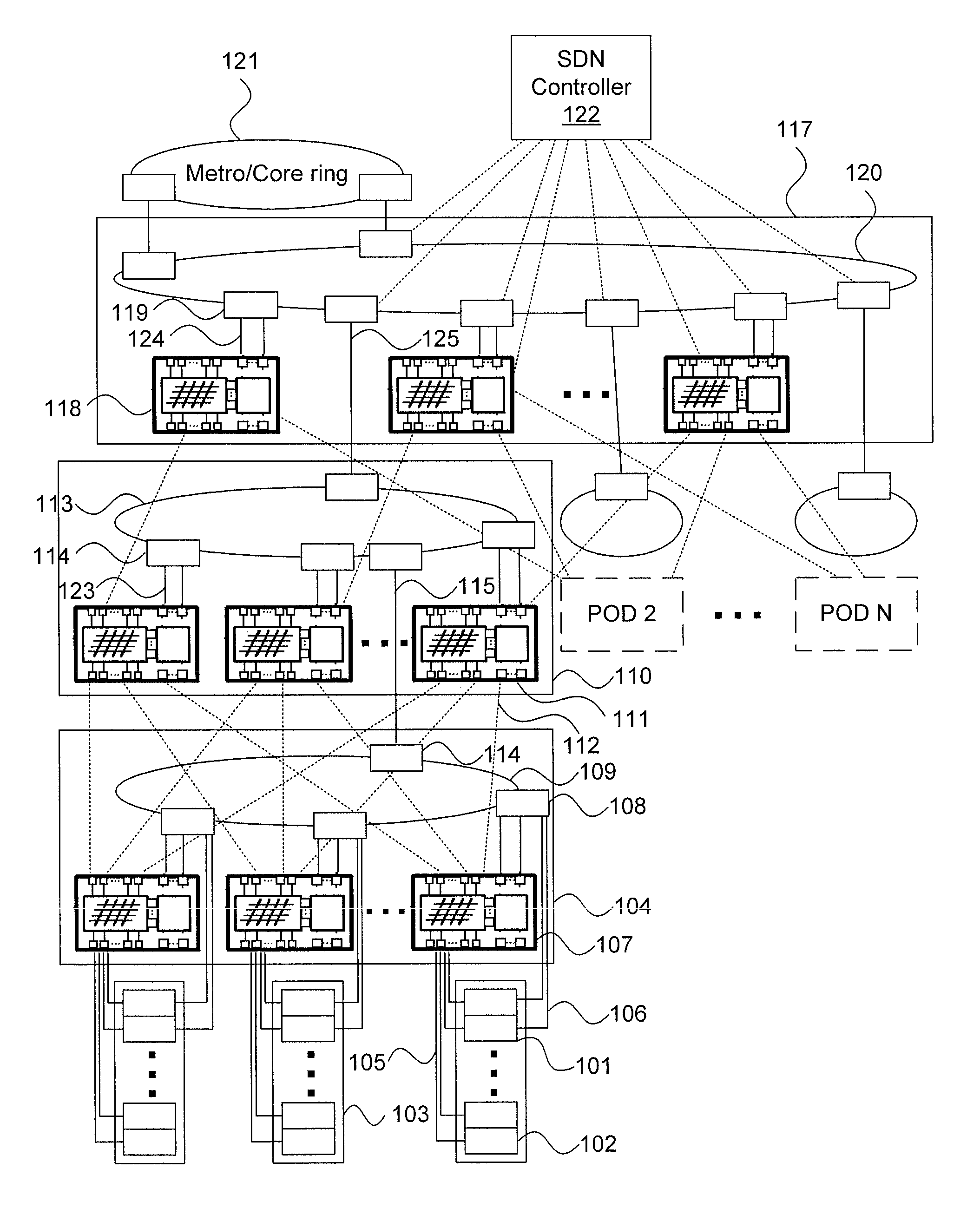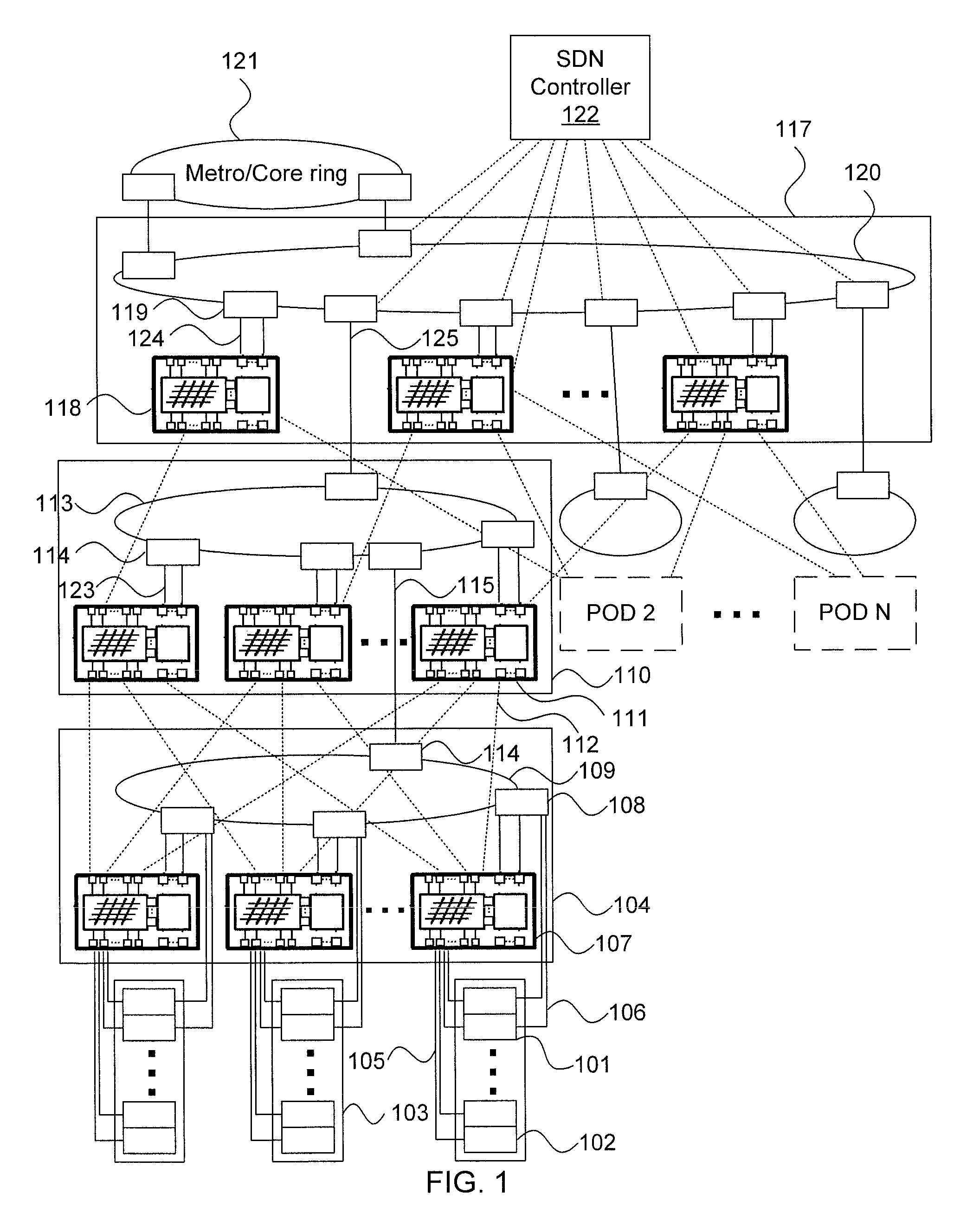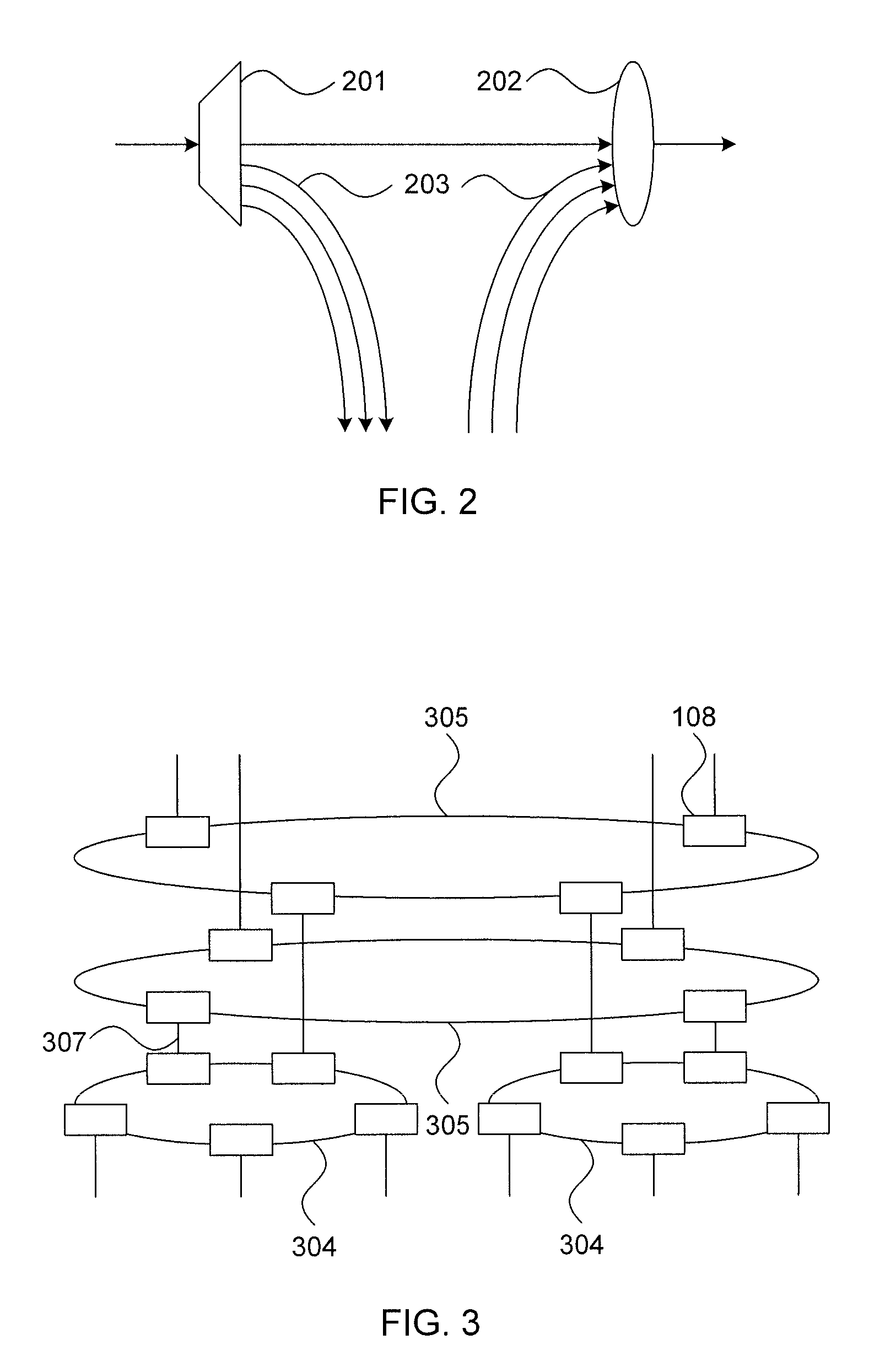Hybrid electro-optical distributed software-defined data center architecture
a software-defined data center and hybrid technology, applied in the field of hybrid electrooptical distributed software-defined data center architecture, can solve the problems of packet transmission latency, high power consumption, limited bandwidth capacity,
- Summary
- Abstract
- Description
- Claims
- Application Information
AI Technical Summary
Benefits of technology
Problems solved by technology
Method used
Image
Examples
Embodiment Construction
[0012]Embodiments of the present principles achieve the benefits of both electrical and optical switching technologies using a hybrid electro-optical, distributed, software-defined data center architecture in which interconnection of servers is provisioned through partially electrical switch fabrics and partially optical switch fabrics. The architecture set forth herein provides all-optical interconnectivity between some servers—referred to herein as “super servers”—of distributed data centers.
[0013]A hybrid electro-optical (HEO) switch interconnects servers using electrical and optical switching technologies. In an HEO switch, an electrical switch fabric is interconnected with an optical add / drop module using tunable dense wavelength division multiplexing (DWDM) optical pluggable transceiver modules. Electrical switch fabrics of the HEO switches are interconnected through a fat-tree architecture, while optical add / drop modules are interconnected through rings of optical fibers. The...
PUM
 Login to View More
Login to View More Abstract
Description
Claims
Application Information
 Login to View More
Login to View More - R&D
- Intellectual Property
- Life Sciences
- Materials
- Tech Scout
- Unparalleled Data Quality
- Higher Quality Content
- 60% Fewer Hallucinations
Browse by: Latest US Patents, China's latest patents, Technical Efficacy Thesaurus, Application Domain, Technology Topic, Popular Technical Reports.
© 2025 PatSnap. All rights reserved.Legal|Privacy policy|Modern Slavery Act Transparency Statement|Sitemap|About US| Contact US: help@patsnap.com



